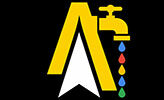Generic item proto. This is intended to have only certain aspects filled (e.g. photo only, name + price). Valid combinations of properties are enforced by linters.
Author: Darth Autocrat
GeostoreCrossingStripePatternProto
Possible patterns of a crossing stripe (any element that denotes a point on a segment or lane at which the vehicle must stop or yield). These include crosswalks, stop, and yield lines.
GeostoreCurveConnectionProto
Protocol buffer describing a curve that connects two externally specified endpoints.
GeostoreCurveConnectionProtoBezierParamsControlPoint
GeostoreDataSourceProto
Every data source used to construct a data repository has an associated feature that provides more information about it. The standard feature properties have the following interpretations: bound – The bounds must includes all features that refer to this data source, so that bucketing MapReduce passes work correctly. name – The provider name associated with this data source. It is expected to remain constant from release to release, and between datasets. address – should be empty. point, polyline, polygon – should be empty. source_info – should not be set. child – should be empty.
GeostoreDimensionComparisonProto
A dimension value tagged with a comparison operator. This can be used for height, width, or length.
GeostoreAttributeIdProto
Used to represent the unique id of an attribute.
GeostoreAttributeValueDisplayProto
Used to help display language-specific names of attributes.
GeostoreBestLocaleProto
A BestLocaleProto holds information about the best-match locale for a feature. Clients may use this information to determine the appropriate local name of a feature.
GeostoreBorderProto
A border represents a line of division between two features of the same type (i.e. United States and Mexico, but not California and Mexico). Borders are only used for features that tile an area. For example, country features have borders with one another because they tile an area of land. Country features do not have borders with province features because those two types of features may intersect with each other. The geometry of a border will often be similar (or derived from) the geometry of the two features that it separates. However, it is useful to have borders represented by stand-alone features for map-styling purposes. Ideally, the geometry in a border feature would be exactly the same as the common edges of the polygonal geometry of the two features. This may not always be true in practice. At some point in the future we would like to build a network of borders for features that are supposed to tile with each other. The network would be composed of different border types meeting at endpoint intersections. In the process of building this network, we would perform small geometry corrections to ensure that the borders align properly at all zoom levels. Border features are intended primarily for map drawing, and they would rarely be useful for geocoding. One exception would be for famous borders like the "Mason Dixon Line" or the "Berlin Wall." The standard feature properties have the following interpretations: name – Borders rarely have names unless they notable in their own right (e.g. "Mason Dixon Line", "Berlin Wall"). point – A border should not have point geometry. polyline – A border should have a single polyline that represents the division between the two features. polygon – A border should not have polygon geometry.
